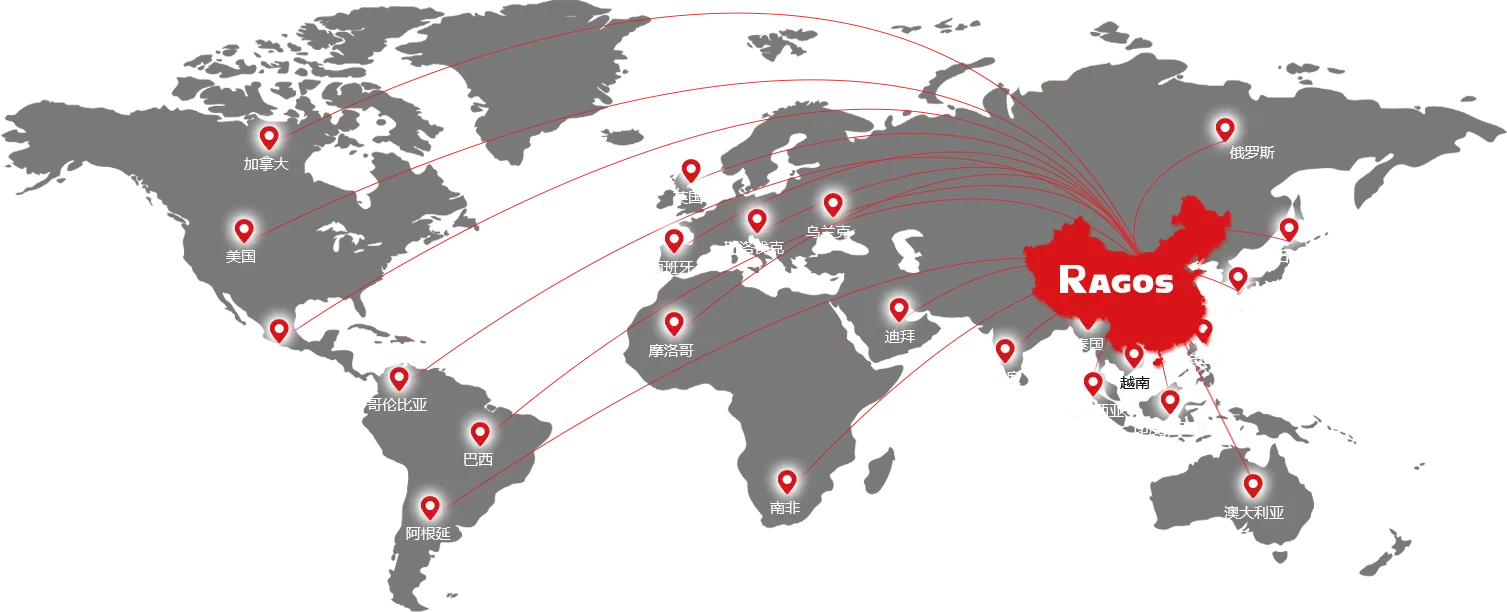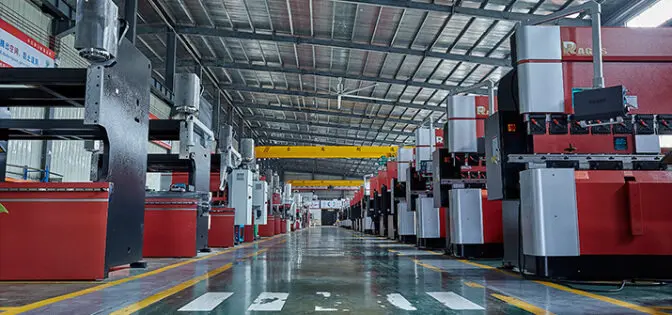Filter press knowledge
Basic overview
Plate and frame filter presses are divided into two types: box filter press and plate and frame filter press.
Element
The structure of the plate and frame filter press consists of three parts:
1. Rack
The frame is the basic component of the filter press. There are thrust plates and pressure heads at both ends. The two sides of the beam are connected to each other. The girders are used to support the filter plate, filter frame and pressure plate. In order to meet advanced hygiene requirements or anti-corrosion requirements, the shelves need to be covered with stainless steel.
A. Thrust plate: Connect to the bracket, place one end of the filter press on the foundation, and the middle part of the thrust plate of the box filter press is for the feed
Holes, four holes in four corners, the upper two corners are the inlet of the washing liquid or pressed gas, and the lower two corners are the outlet (underflow structure or filtrate outlet)
b. Pressing plate: used to press the filter plate and filter frame, and the rollers on both sides are used to support the pressing plate rolling on the track of the beam.
C. Girder: It is a load-bearing component. Hard PVC, polypropylene, stainless steel or new anti-corrosion coatings can be painted according to environmental protection requirements.
2. Pressing mechanism
Manual compression, mechanical compression, hydraulic compression.
A. Manual compression: Use a screw mechanical jack to compress the compression plate to tighten the filter plate.
B. Mechanical compression: The compression mechanism consists of a motor (with advanced overload protector) reducer, gear, screw and fixed nut. During compaction, the motor rotates forward, driving the reducer and gear to rotate the screw in the fixed nut, pushing the pressing plate to compress the filter plate and filter frame. As the pressing force becomes larger and larger, the load current of the motor increases. When the current value set by the protector is reached, the maximum pressing force is reached, the motor cuts off the power supply, stops rotating, and the screw and fixing nut are reliable. The self-locking helix angle can reliably ensure the compression state during work. When retracting, the motor reverses. When the pressure block on the pressure plate is pressed down, it will return to stop when it reaches the travel switch.
C. Hydraulic compression: The hydraulic compression mechanism is composed of a hydraulic station, a cylinder, a piston, a piston rod, and a connection between the piston rod and the compression plate.
The structure of Hafranka hydraulic station is: motor, oil pump, relief valve (pressure regulating) reversing valve, pressure gauge, oil circuit, and oil tank. When the hydraulic stamping machine is pressed, the hydraulic station supplies high-pressure oil, and the component chamber formed by the oil cylinder and the piston is filled with oil. When the pressure is greater than the friction resistance of the pressure plate, the pressure plate slowly presses the filter plate. When the tightening force reaches the pressure value set by the relief valve (displayed by the pressure gauge pointer), press the filter plate, filter frame (plate and frame type) or filter plate (box type), and the relief valve begins to relieve pressure and unload. When the motor power is cut off, the pressing action is completed. When retracting, the reversing valve changes direction and the pressure oil enters the rod cavity of the cylinder. When the oil pressure can overcome the frictional resistance of the pressure plate, the pressure plate begins to retreat. When hydraulic pressure is maintained automatically, the pressing force is controlled by the electric contact pressure gauge, and the upper limit pointer and lower limit pointer of the pressure gauge are set to the values required by the process. When the pressing force reaches the upper limit of the pressure gauge, the power supply oil pump stops and the oil pump stops power supply. Pressure reduction may occur due to internal and external leaks in the oil system. When the pressure drops to the lower limit of the pressure gauge, turn on the power and the oil pump starts supplying oil. When the pressure reaches the upper limit, cut off the power. The oil pump stops supplying oil, and this cycle is used to achieve the effect of ensuring the compression force during the filtering process.
3. Filtering mechanism
The filter mechanism consists of filter plate, filter frame, filter cloth and pressed membrane. Both sides of the filter plate are covered with filter cloth. When a filter press membrane is required, a set of filter plates is composed of a diaphragm plate and a side plate. The base material of the diaphragm plate is covered with rubber diaphragm or polypropylene diaphragm on both sides, the outside of the diaphragm is covered with filter cloth, and the side plates are ordinary filter plates. The material enters each filter chamber from the feed hole on the thrust plate. The solid particles are trapped in the filter chamber because the pore size is larger than the filter medium (filter cloth). The filtrate flows out from the outlet hole under the filter plate. When the filter cake needs to be dried, in addition to pressing with a diaphragm, compressed air or steam can also be used to pass through the flushing port, and the air flow can flush the moisture in the filter cake to reduce the moisture content of the filter cake.
(1) Filtering method
The filtrate outflow methods include open flow filtration and undercurrent filtration.
A. Open flow filtration: The liquid outlet under each filter plate is equipped with a water nozzle, and the filtrate flows out from the water nozzle intuitively.
B. Underflow filtration: There is a liquid outlet hole under each filter plate, and the liquid outlet holes of several filter plates are connected to form one liquid outlet.
This channel is drained by a pipe connected to the outlet hole below the thrust plate.
(2) Washing method When the filter cake needs to be washed, there are open flow one-way washing and two-way washing, and undercurrent one-way washing and two-way washing.
A. Clear flow one-way washing means that the washing liquid enters sequentially from the washing liquid inlet hole of the thrust plate, passes through the filter cloth and then through the filter cake, and flows out from the non-porous filter plate. At this time, the drain nozzle of the orifice plate is closed. In this state, the outlet nozzle of the non-orifice plate is open.
B. Clear flow two-way washing means that the washing liquid is washed twice from the washing liquid inlet holes on both sides of the thrust plate, that is, the washing liquid is washed from one side and then from the other side, and the outlet of the washing liquid is the same as the inlet. The direction of the angle is therefore called two-way cross-washing.
C. Undercurrent unidirectional flow means that the washing liquid enters the perforated plate from the washing liquid inlet hole of the thrust plate, passes through the filter cloth and then through the filter cake, and flows out from the non-porous filter plate.
D. Undercurrent two-way washing means that the washing liquid is washed twice from the two washing liquid inlet holes on both sides of the top of the plug plate, that is, first from one side and then from the other side. The washing liquid outlet is diagonal. direction, so it is also called undercurrent two-way cross-washing.
(3) Filter cloth: Filter cloth is a main filter medium. The selection and use of filter cloth plays a decisive role in the filtration effect. The selection should be based on factors such as the pH value of the filter material and the size of the solid particles. The material and pore size ensure low filtration cost and high filtration efficiency. When using, ensure that the filter cloth is uneven and the pores are smooth.
Mechanical classification
Plate and frame filter press
A set of filter chambers is composed of alternating filter plates and filter frames. The surface of the filter plate has grooves, and its protruding parts support the filter cloth. There are through holes at the corners of the filter frame and filter plate, which form a complete channel after assembly, which can pass into the suspension, washing water and guide the filtrate. There are handles on both sides of the board and frame supported on the cross beam, and the board and frame are pressed tightly by the pressing device. The filter cloth between the plate and frame acts as a gasket. The suspension hydraulic pressure is sent into the filter chamber by the feed pump
The filter residue forms on the filter cloth until it fills the filter chamber. The filtrate passes through the filter cloth and flows along the grooves of the filter plate to the corner channels of the plate and frame for discharge. After filtration is completed, the filter residue can be washed with washing water. After washing, compressed air is sometimes introduced to remove residual washing liquid. Then open the filter press to remove the filter residue, clean the filter cloth, re-tighten the plate and frame, and start the next working cycle.
The plate and frame filter press is suitable for suspensions with a large amount of or nearly incompressible filter residue. Suitable suspensions usually have a solids concentration of less than 10% and an operating pressure of 0.3 to 0.6MPa. The filter area can be increased or decreased depending on the number of plates and frames used. The plate frame is usually square, the inner side length of the filter frame is 320 to 1250 mm, the frame thickness is 25 to 40 mm, and the filter area is 0.5 to 200 square meters. The plate and frame pressing methods include manual screw, electric screw, and hydraulic. The materials of plates and frames include cast iron, stainless steel, polypropylene, rubber, etc.
Chamber filter press
The structure and working principle of the box filter press are similar to that of the plate and frame filter press. The difference is that both sides of the filter plate are recessed, and each two filter plates are combined into a single box filter chamber, eliminating the filter frame. There is a round hole in the center of the filter plate, through which the suspension flows into each filter plate. Filter chamber. This filter is suitable for suspensions that need to be filtered at higher pressures without washing the filter residue.
Filter press installation and commissioning
1. The filter press should be installed on a flat concrete foundation. The feed end thrust plate feet are fixed on the foundation through anchor bolts; the bracket end does not require anchor bolts, or use two nuts to position and lock the anchor bolts, leaving an appropriate gap between the nut washers and the anchor base, so that The legs can be extended slightly. The installer should correct the verticality of the beam and the large plane of the thrust plate before positioning.
2. The basic structure should be designed by construction engineers according to the load conditions of the equipment, and the anchor bolts should be filled twice in the reserved holes.
3. There should be enough space for operation and maintenance around the filter press. The hydraulic filter press should choose a suitable location to place the hydraulic station to ensure that the hydraulic station can work normally.
4. Place the filter plate according to the work requirements, and arrange the feeding, washing and drainage pipelines. It is equipped with a filter pressure display and a return channel to control the filter pressure. In the case of diaphragm squeeze type, compressed air lines are arranged.
5. Inject clean 20#-40# hydraulic machinery oil into the oil tanks of the hydraulic filter press and hydraulic station, and the operating temperature is >-5℃; if the ambient temperature is low, you can choose hydraulic oil with similar viscosity and lower freezing point. Adding hydraulic oil must pass through a 80-100 mesh screen.
6. For mechanical or hydraulic compression devices, the starting motor should work normally when the power is turned on. When hydraulic pressure is applied, the pressure gauge should rise smoothly and the hydraulic system should have no leaks. The working pressure of the hydraulic station should be adjusted according to the size of the model. If the fuel tank is found to be insufficient after the test, it must be replenished.
Filter filter use and maintenance precautions
Lake The normal filter press should be debugged before feeding, and the entire machine should be inspected before each shift. Mechanical compression transmission components and reduction gearboxes must be filled with lubricating oil; hydraulic pressure is used to check the oil storage capacity of the oil tank and the working pressure of the hydraulic station. Hydraulic oil is generally replaced once a year. When replacing, the hydraulic system should be fully cleaned. The working pressure of the hydraulic station should be less than the maximum working pressure of the oil cylinder, but the minimum should not be lower than the allowable value of the filter pressure. If it is too small, it will cause a larger leak and damage the component.
2. It is prohibited to start work when the number of filter plates is less than the specified number to avoid damaging the machine. Check the arrangement of the filter plates before feeding. The filter cloth must not be folded to prevent large amounts of leakage. After the filter cake is discharged, the filter plates must be pressed tightly and aligned.
3. After everything is normal, press the filter plate for filtration. Filtration pressure and filtration temperature must be within specified ranges. If the filter pressure is too high, leakage will occur. If the filtration temperature is too high, the plastic filter plate will be easily deformed. The concentration should be uniform. There must be no mixed materials; after the filter cake is discharged, the filter cloth and filter plate must be rinsed clean. Residues are strictly prohibited from sticking to the sealing surface or the feed channel, otherwise it will affect the smoothness of the feed and the sealing of the filter plate. Affected, the pressure on both sides of the filter plate is unbalanced and the filter plate is damaged.
4. The selected filter cloth must meet the filter pad requirements of filtration technology. The new filter cloth should be shrunk before opening.
The pore size should be smaller than the filter plate pore size. When the filter plates are matched, the holes and plate holes should be relatively concentric. The filter cloth of the feed hole should be close to the pipe wall, otherwise it will cause unclear filtration, low filtration rate, and rupture of the cloth pipe. Consequences for intended filtering purposes.
5. In the early stage of filtration, the filter press is relatively turbid. When a filter cake forms on the filter cloth, the filtrate becomes clear. If the filtrate is turbid or clear and mixed, the filter cloth may be damaged or the cloth holes may be deviated from the plate holes. At this time, close the valve or stop feeding and replace the filter cloth. A small amount of leakage caused by the capillary phenomenon of the filter cloth is allowed between the filter plates.
6. When moving the filter plate, use even and appropriate force. Do not bump or knock to avoid damaging the sealing surface and filter wrench. After being used for a period of time, the filter cloth will become hard and its performance will decrease. For this reason, regular inspections are necessary. If changes are found to affect the filtration speed, low-concentration weak acid and weak alkali can be used to neutralize and clean the filter cloth to restore it to its original state. If it cannot be restored, please replace it in time.
7. Slurry, emulsion or compressed air valves must be started according to the operating procedures and cannot be started at the same time.
















